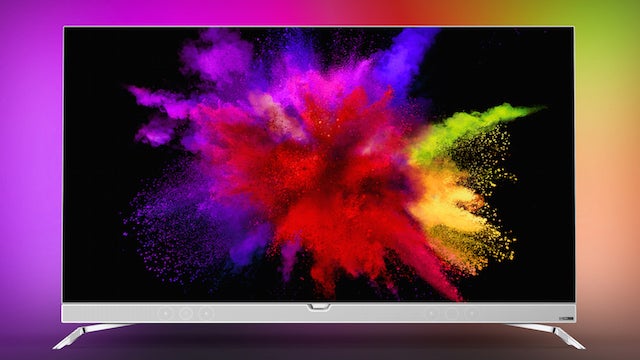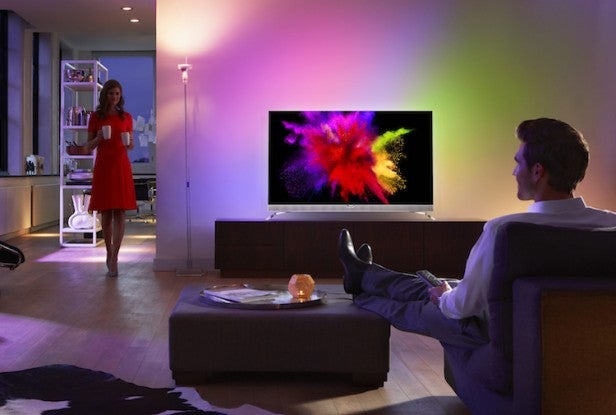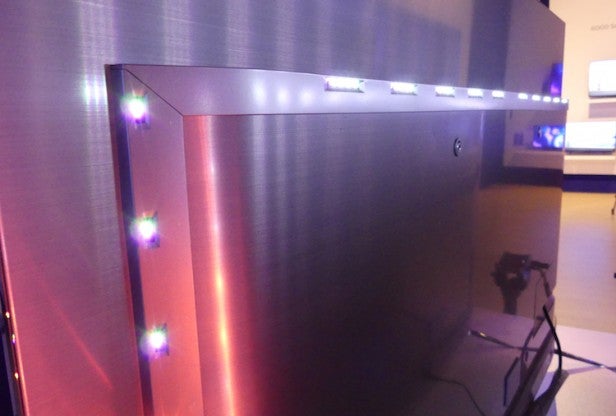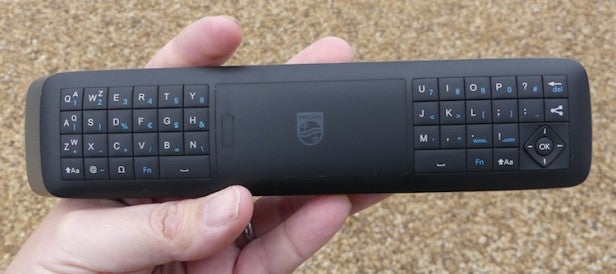Philips 55POS901F OLED TV Review
Philips 55POS901F OLED TV
OLED meets Ambilight to glorious effect.

Sections
- Page 1 Philips 55POS901F OLED TV Review
- Page 2 Performance and Conclusion Review
Verdict
Pros
- Gorgeous design
- Mostly outstanding picture quality
- Decent sound quality
Cons
- Can be complicated to use
- Uses a 2016 OLED panel
- Input lag slightly high
Key Specifications
- Review Price: £2800.00
- Native 4K OLED screen
- HDR10 support
- Three-sided Ambilight
- Android smart TV system
- Built in 'soundbar'
What is the Philips 55POS901F/12?
The 55-inch, £2,800 55POS901F/12 is the debut OLED TV from Dutch brand Philips. And with it we get the chance to see the stunning picture quality potential of OLED married to Philips’ renowned Ambilight technology for the first time. For the most part, the results are every bit as good as I’d hoped they’d be.
Watch: OLED vs QLED
Philips 55POS901F/12 – Design and Build
The 55POS901F/12 is quite the looker. The majority of its rear is mind-blowingly thin, while the extensive metallic finish on the front and rear set a premium, futuristic tone.
Philips has opted to build the 55POS901F/12’s speakers, inputs and processing into the TV rather than an external box, meaning that the bottom of the screen protrudes much further out to the rear than the rest. This takes away some of the “magic” of the otherwise ultra-thin design.
As with most Philips TVs, the 55POS901F/12’s design doesn’t stop at the edges of its frame. Philips’ Ambilight system casts coloured pools of light, capable of tracking the content of the images you’re watching, some distance beyond the top, left and right edges by an array of LEDs mounted on the TV’s rear.
I’m aware that Ambilight can sound rather gimmicky, but in reality it’s a feature that can make the viewing experience so much more immersive. Especially now that Philips has become so skilled at matching the location and tone of Ambilight’s colours to the on-screen images.
The 55POS901F/12’s build quality is outstanding. I’m usually nervous about man-handling a TV as ultra-thin as this one, but here the bodywork feels strong – the process of attaching the feet didn’t give me any heart-in-mouth moments at all.
Related: Best TV 2017
The only potential problem with the 55POS901F/12’s design is the way the feet sit right under the bottom corners of the screen. It means you’ll need a furniture stand that’s at least as wide as the display.
The 55POS901F/12 ships with two remote controls: a plasticky “basic” remote, and an advanced unit that boasts a lovely weighty feel, a full QWERTY keyboard on its rear, and a touch pad at its heart.
I typically resorted to the basic remote, though – chiefly because the select and movement buttons on the advanced remote make it far too complicated to use without making frequent mistakes.
Philips 55POS901F/12 – Setup
The 55POS901F/12 is challenging to set up if you really want to get the best from it. This is down to a slightly over-aggressive out-of-the-box approach to pictures, combined with the extent of the onboard video processing.
I never presume to totally dictate the way you should set up your TV, but there are a few things I’d recommend.
First, I’d use the Standard picture preset rather than Movie. While Movie turns off most of the Philips processing engine, thus delivering what might be considered the most accurate picture, it simply doesn’t look as good as a carefully tweaked Standard setting.
This applies particularly to HDR content, where the picture becomes uncomfortably dark, has shadow detail crushed out of some dark areas, and becomes markedly less dynamic and sharp.
Having selected Standard, and preferring to leave Philips’ Ultra Resolution feature on, you should reduce the Sharpness setting from its default of level five down to four. This will stop the image’s eye-catching sharpness tipping over into noise.
I also suggest leaving standard Noise Reduction off with all HD and 4K sources, and turning MPEG NR off with good 4K sources – although you can leave the latter on its lowest setting when watching HD digital broadcasts.
I also found it beneficial when watching HDR – although not SDR – to shift the brightness up from its default 50 setting to around 58; turn the Perfect Contrast feature off; and set the Contrast Mode to Best Picture.
Where motion is concerned, I’d suggest keeping LCD Clear Motion on, but Perfect Natural Motion off – at least with 4K sources, where PNM tends to make areas of small detail look noisy during movement.
While I’d recommend experimenting with the Colour Enhancement feature, be warned that even on its lowest setting it can occasionally cause a pinkish/purple tone to creep into areas of HDR colour banding. For more on this banding, read the Performance section.
Finally, where Ambilight is concerned I suggest Follow Video, but with Ambilight brightness reduced to level two or – at a push – three, and its saturation set to its neutral “0” point.
Related: Best TV
Philips 55POS901F/12 – Features
The combination of a top-of-the-line Philips Perfect Pixel processing engine with the high-contrast, self-emissive joys of OLED immediately looks attractive. As does the potential to wed the rich colours associated with OLED to Philips’ unique Ambilight system.
Beyond these headline facts, the 55POS901F/12 inevitably supports both a native 4K resolution and high dynamic range (HDR) playback. The HDR playback should benefit from Philips’ processing know-how – based on the experience of the excellent 65PUS7601 LCD TV – with some superior “mapping” of the HDR10 format.
The 55POS901F/12’s brightness peaks at around 640-650 nits, revealing that it’s based on a 2016 OLED panel rather than one of the new 800-nit (approximately) 2017 panels seen at CES. This is a shame, but Philips does have a knack of getting the maximum impact from any brightness available to its panels.
Building the 55POS901F/12 around a 2016 LG OLED panel ensures that the TV can achieve as much as 96% of the so-called DCI-P3 colour range that’s currently targeted by most of the current HDR sources.
A key feature of the 55POS901F/12’s design is the integrated soundbar attached to the screen’s bottom edge. This sports an array of forward-facing micro-drivers for mid-range and treble duties, while woofers on the rear should serve up more bass than you typically get with super-thin TVs. 
The 55POS901F/12’s smart features come courtesy of a mixture of Google’s Android TV and a few of Philips’ own apps. The model I tested carries the Android Marshmallow platform, which provides highlights of Netflix, Amazon, Google Play Movies, Google Play Music, YouTube, the BBC iPlayer and Wuaki.tv.
Unfortunately, neither the Android or Philips app services currently provide access to any of the UK’s big four catch-up TV services beyond the BBC iPlayer. Also, while the Netflix app supports 4K and HDR, at the time of writing the Android Amazon Video app supports only 4K, with no HDR.
As with many other TVs I’ve tested that use Android TV, the 55POS901F/12’s menus run sluggishly in places.
I’ve already covered the most important picture-processing tools of the 55POS901F/12 in the Setup section, so all that’s left to do here is mention a couple of features that the 55POS901F/12 lacks. Namely support for 3D playback and the Dolby Vision HDR format. Though Philips has confirmed that its OLED TV will be getting an update to support the ‘HLG’ broadcast HDR format at some point in the future.
How we test televisions
We test every TV we review thoroughly over an extended period of time. We use industry standard tests to compare features properly. We’ll always tell you what we find. We never, ever, accept money to review a product.

